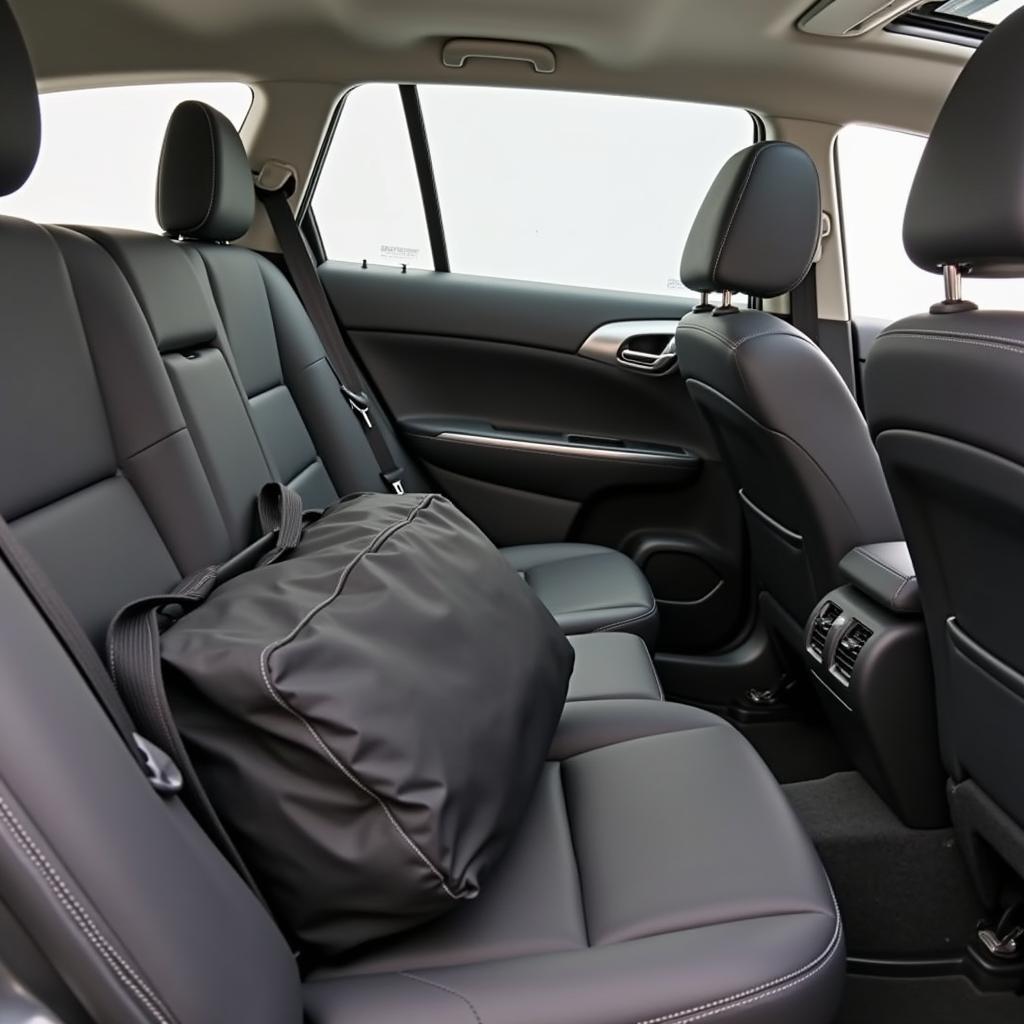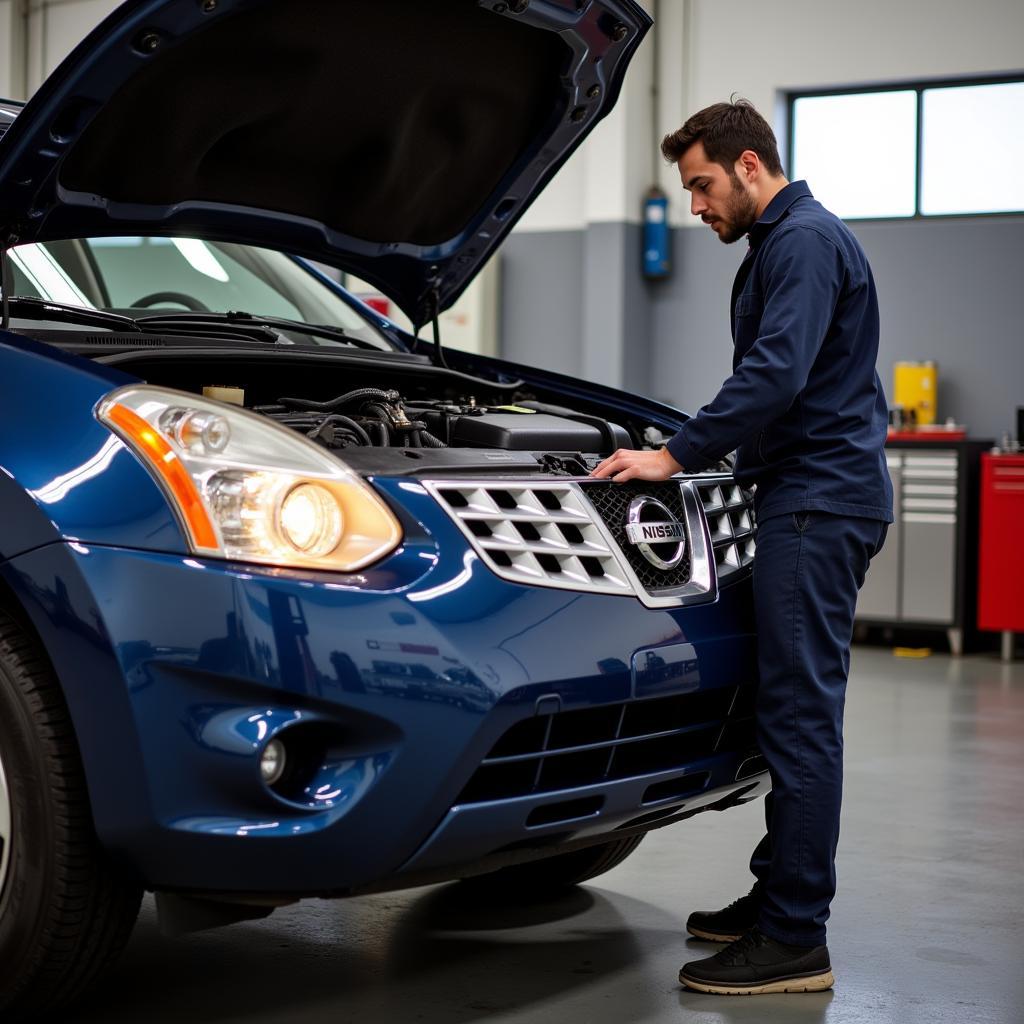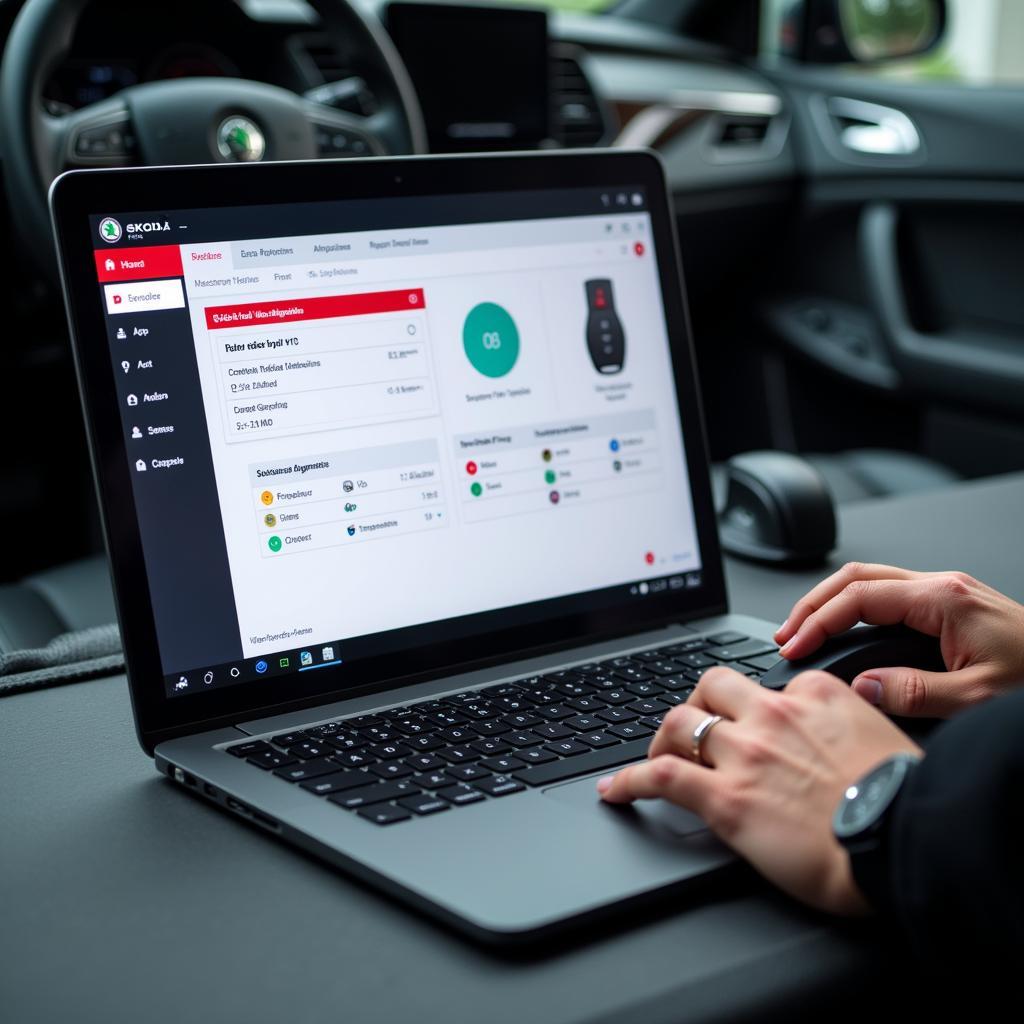The seat belt warning light on your 2009 Nissan Rogue is a crucial safety feature designed to remind you and your passengers to buckle up. While the light illuminating usually means someone hasn’t fastened their seat belt, it can sometimes signal a malfunction. This article will guide you through common causes for the 2009 Nissan Rogue seat belt warning and provide practical solutions to address them.
Common Causes of Seat Belt Warning Light in a 2009 Nissan Rogue
Several factors can trigger the seat belt warning light in your Nissan Rogue. Here’s a closer look at the most common culprits:
1. Unfastened Seat Belt
This may seem obvious, but it’s the most frequent reason for the warning light. Before exploring other possibilities, make sure all passengers have fastened their seat belts correctly.
2. Faulty Seat Belt Buckle Sensor
The buckle sensor is responsible for detecting if a seat belt is fastened. Over time, these sensors can wear out, become dirty, or get damaged. A faulty sensor can send a false signal to the car’s computer, triggering the warning light even when the seat belt is fastened.
3. Damaged Seat Belt Pretensioner
The seat belt pretensioner is a safety device that tightens the seat belt in the event of a collision. If the pretensioner or its wiring is damaged, it can cause the seat belt warning light to illuminate.
4. Software Glitch
Like any computer system, your car’s software can experience occasional glitches. These glitches can disrupt various systems, including the seat belt warning system.
5. Weight on the Passenger Seat
Sometimes, placing a heavy object on the passenger seat can trigger the seat belt warning light, even if no one is sitting there. The weight sensor in the seat may misinterpret the object as a passenger and activate the warning.
 Heavy Object on Passenger Seat
Heavy Object on Passenger Seat
Troubleshooting the Seat Belt Warning Light
Now that we’ve identified the potential causes, let’s delve into some troubleshooting steps:
-
Check All Seat Belts: As mentioned earlier, ensure all occupants have fastened their seat belts correctly. Sometimes, a seat belt may not be fully engaged in the buckle.
-
Inspect Seat Belt Buckles and Wiring: Carefully examine all seat belt buckles for visible damage, debris, or loose connections. If you notice anything unusual, it’s best to consult a qualified mechanic.
-
Check for Diagnostic Trouble Codes (DTCs): A professional mechanic or someone with an OBD-II scanner can retrieve diagnostic trouble codes from your car’s computer. These codes can pinpoint the specific area causing the warning light.
-
Software Update or Reset: If the issue stems from a software glitch, a software update or reset may resolve the problem. You can take your car to a Nissan dealership or a trusted mechanic for this procedure.
“Many times, a simple software update can resolve seemingly complex issues in modern vehicles,” advises John Smith, Senior Automotive Technician at ABC Auto Repair. “It’s always a good starting point when troubleshooting electronic systems in your car.”
-
Address the Passenger Seat Weight: If you suspect the passenger seat weight is the culprit, remove the heavy object and see if the warning light turns off.
When to Seek Professional Help
While some seat belt warning light issues can be resolved with simple troubleshooting, others require professional attention. If the warning light persists after trying the steps above or you suspect a more complex problem, it’s crucial to consult a qualified mechanic. Attempting to fix intricate electrical or safety systems yourself can be dangerous and potentially exacerbate the issue.
 Nissan Rogue at Mechanic Shop
Nissan Rogue at Mechanic Shop
Conclusion
A functioning seat belt warning system is vital for the safety of you and your passengers. Understanding the common causes of the 2009 Nissan Rogue seat belt warning light and following the troubleshooting tips outlined above can help you address the issue effectively. However, remember that professional help is always recommended for more complex problems. By prioritizing your safety and seeking expert assistance when needed, you can ensure a smoother and safer driving experience.

